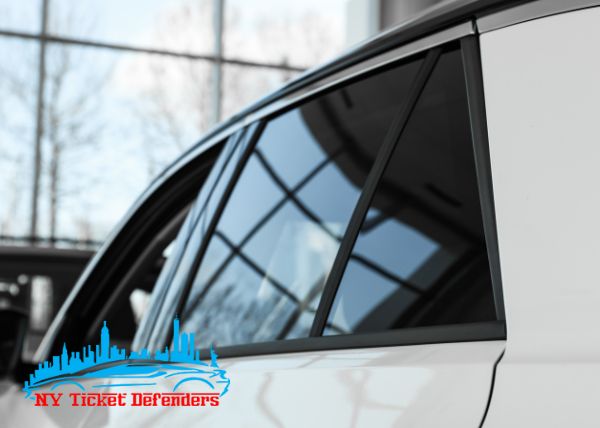The Science Behind Car Window Tinting and UV Ray Security
The Science Behind Car Window Tinting and UV Ray Security
Blog Article
Home Window Tinting Laws and Standards: What You Need to Know Prior To Tinting Your Cars And Truck
Prior to waging home window tinting for your car, it is important to familiarize yourself with the diverse regulations and standards that control this practice throughout different states. These laws determine the permitted degrees of tint darkness, frequently measured by visible light transmission (VLT) percentages, and consist of specific specifications for front windscreens focused on ensuring roadway safety. Additionally, certain territories might supply medical exceptions for people with qualifying conditions. Understanding these intricacies can save you from prospective lawful ramifications, however what are the details guidelines in your state?
Overview of Window Tinting Rules
Window tinting legislations are regularly subject to variation throughout different territories, mirroring neighborhood laws and safety and security factors to consider. These laws dictate the permissible levels of tint darkness and reflectiveness on lorry home windows, making certain that drivers preserve adequate visibility while also protecting against unsafe UV rays and warm.
Many policies identify home window tinting based upon the Visible Light Transmission (VLT) percent, which indicates the quantity of light that can go through the window. Generally, lower VLT percentages symbolize darker colors. Legislations typically differentiate in between the front, side, and rear home windows, with more stringent restrictions used to the front windscreen to enhance safety and security for both the chauffeur and various other road individuals.
Furthermore, some jurisdictions impose constraints on the reflectivity of the color, protecting against extreme glare that can impair presence. Exemptions to these legislations may exist for individuals with specific clinical conditions requiring extra sunlight protection. Conformity with window tinting policies is important, as infractions can result in penalties, obligatory elimination of the color, and potential increases in insurance coverage costs. For that reason, it is crucial for car proprietors to familiarize themselves with regional regulations prior to waging home window tinting installations.
State-by-State Tint Laws
Comprehending the certain window tinting regulations in each state is essential for lorry proprietors looking for to abide with the legislation. Each state in the united state has actually established its very own set of regulations controling home window tinting, which can differ significantly. These guidelines typically determine the allowable levels of tint darkness, the types of home windows that can be tinted, and any kind of clinical exemptions that might use.
For circumstances, states like California have stringent restrictions on tint darkness for front home windows, while others, such as New Mexico, may allow darker colors. In addition, certain states mandate specific presence percentages for numerous windows, consisting of the windscreen, front side home windows, and rear home windows. It is important for car proprietors to acquaint themselves with their state's laws to stay clear of prospective fines or charges.
In addition, some states may require a certification sticker label to be put on tinted home windows, showing conformity with state legislations. Failing to stick to these regulations not just runs the risk of legal effects but can additionally affect security and exposure while driving. For that reason, automobile owners should perform detailed research or consult local authorities to make sure complete understanding and compliance with state-by-state tint laws.
Allowed Tint Levels and Types
Numerous car owners may be stunned to find out that allowed color levels and types differ extensively throughout different states. Each state has actually developed its very own laws regarding the permissible darkness and reflectivity of window color, frequently gauged by Visible Light Transmission (VLT) percents. VLT refers to the amount of try here light that can pass via the tinted windows; thus, a lower percentage suggests a darker color.

Moreover, the kinds of color products permitted can differ, with some states forbiding mirror-like or metal coatings. It is vital for vehicle owners to acquaint themselves with their state's particular laws to guarantee compliance. Non-compliance can lead to fines, compulsory elimination of the color, or other lawful repercussions, making it necessary to recognize these regulations before continuing with setup.
Medical Exceptions for Tinting
While not all states supply allocations for medical exemptions relating to window tinting, those that do recognize the need for certain individuals to improve visibility and comfort because of medical problems. Numerous clinical problems, such as lupus, skin cancer, and certain eye disorders, can render individuals specifically conscious sunshine. These individuals might need darker colors to shield themselves from hazardous UV rays and glow.

It is important to keep in mind that despite a medical exemption, there might still be constraints on the degree of tint allowed. Compliance with state regulations ensures that individuals are both safeguarded and within lawful limitations. Those considering clinical exceptions ought to contact their regional Department of Motor Automobiles or equivalent authority to comprehend the needs and procedures essential to get an exception successfully.
Penalties for Non-Compliance
Failing to follow window tinting laws can bring about considerable penalties, which differ by state. Legislation enforcement agencies are equipped to provide citations for vehicles that do not adhere to the defined tinting guidelines. These fines normally include fines, which can vary from modest total up to a number of hundred dollars, depending upon the you could try these out seriousness of the violation and the state concerned.
In some jurisdictions, duplicated offenses might result in intensifying penalties or extra penalties, such as compulsory court appearances. Non-compliance may require the elimination of illegal tinting, frequently at the owner's expense. In severe situations, habitual wrongdoers may face suspension of their lorry enrollment till compliance is attained.
Additionally, insurance policy ramifications may arise from obtaining multiple citations for window tint offenses. Insurance companies may view such infractions as a sign of riskier actions, possibly causing raised premiums or trouble in insurance coverage.
To avoid these fines, it is important for automobile owners to familiarize themselves with their neighborhood home window tinting laws and make sure that their vehicle complies (Window Tinting). This proactive technique not just prevents lawful implications however likewise promotes road safety
Final Thought

Many guidelines categorize home window tinting based on the Visible Light Transmission (VLT) percent, which indicates the quantity of light that discover here can pass with the home window. Compliance with home window tinting regulations is crucial, as infractions can result in penalties, mandatory removal of the color, and potential boosts in insurance coverage costs.Understanding the certain window tinting regulations in each state is crucial for car owners looking for to conform with the law. These guidelines usually determine the allowable degrees of tint darkness, the kinds of home windows that can be tinted, and any medical exceptions that might use.
For instance, states like California have stringent restrictions on color darkness for front windows, while others, such as New Mexico, might permit darker colors.
Report this page